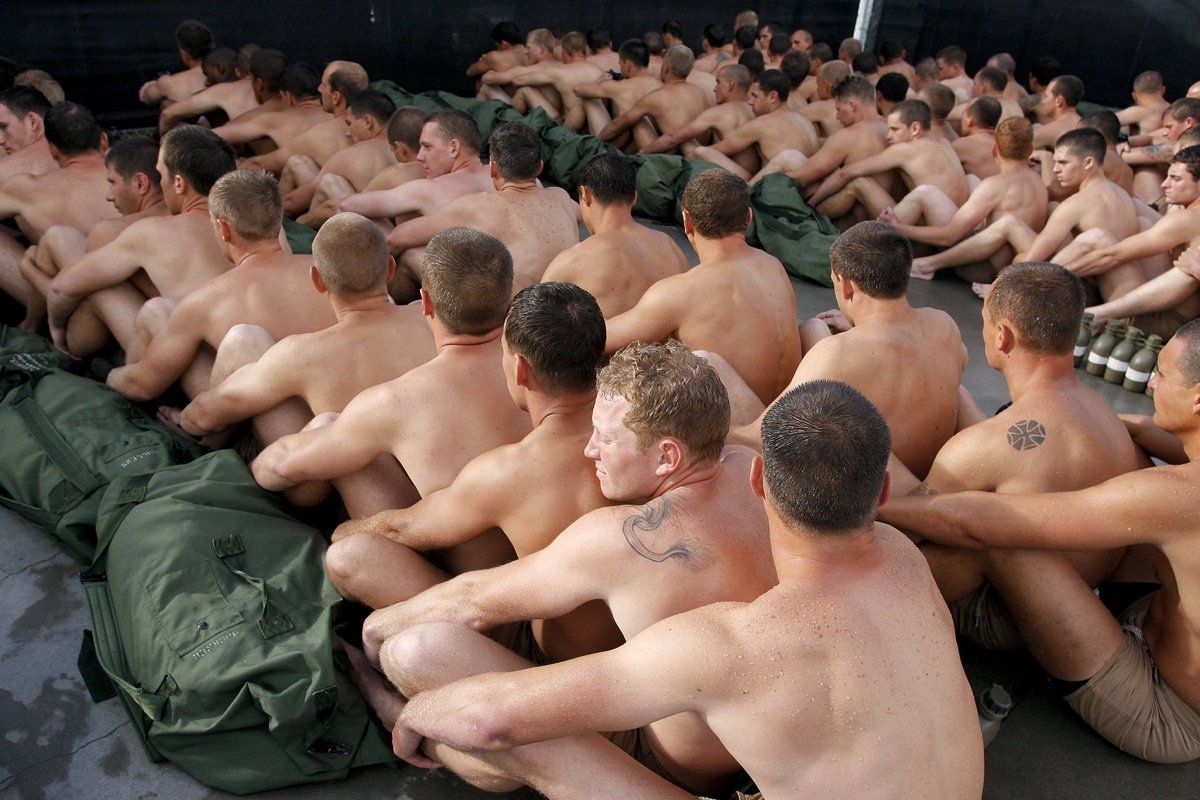
High in the Caribbean night, Dick Marcinko shouted profanities. After five months of training, culminating in early 1981, his clandestine strike force—the nation's first terrorist hit squad—is parachuting into Vieques Island, a scrub-jungle rock near Puerto Rico. Their inaugural mission: snatch a hostage back from Los Macheteros, a militant nationalist group. But there's a hitch. Marcinko's parachute malfunctioned, sending the commander whistling off-course and face-first into a tree. "It was a good hurt," he would later write, "the kind that made me feel I was alive." Once on the ground, he punched his executive officer in the shoulder and gave the order. "Let's go hunting."
SEAL Team Six has been doing so ever since. They're America's quietest killers, working anonymously and without public recognition. But SEALs, so-called for their lethal skill by Sea, Air, or Land, can also make some noise—as they did when they killed Osama bin Laden last week with a point-blank shot to the left temple. They were already a semi-legendary bunch, a wing of the Navy that attracts gung-ho soldiers who drink snake venom and punctuate kills with a kiss to the victim's cheek (if their memoirs are to be believed). Swagger, perhaps, but also inevitable. SEAL training takes at least two years—about the same as it takes to become an astronaut—and includes an agonizing combination of brain and brawn, topped with five days of simulated battle stress. The men call it "Hell Week" (official name: Motivation Week), a regime of bullets, bombs, and extreme endurance tests. Men can ring a bell to quit at any time, and historically two out of three do. There are only about 2,500 SEALs worldwide, and an estimated 200 in Team Six, the squad that picked off three Somali pirates from 100 feet on rough seas in 2009.
But the SEALs haven't always enjoyed such heady days. In fact, the bin Laden mission is a bright spot in a history marked by scandal, failure, and, most recently, a decade of stalled recruiting efforts. That may not change. "Recruiting is a big problem, and retention is an even bigger problem," says former senator Bob Kerrey, a Medal of Honor–winning SEAL during Vietnam. "Ninety percent of a SEAL's life is training, preparation, and being bored to death."
The SEALs originated on the beaches of World War II, where "frogmen" cleared the way for invasions, and they gained fame in Vietnam. But the modern SEALs were born out of the Iran hostage crisis, when America's best rescue team lost eight men, seven helicopters, and a plane before even making contact with the militants who had taken over the U.S. Embassy in Tehran. In the aftermath, Congress created a joint command, the brainstem for all U.S. Special Forces.
But the early results were underwhelming. Four SEALs drowned during the invasion of Grenada in 1983. A 1984 attempt to rescue a kidnapped CIA station chief failed in Beirut. And in 1987, Team Six itself was splashed across the news after some of Marcinko's men confessed to exploiting the clandestine nature of their work: stealing scuba equipment, faking travel receipts, and falsifying training vouchers.
The 1990s began more honorably, if not augustly. The movie Navy Seals was a cult hit starring Charlie Sheen as a hotheaded foe of terrorists worldwide. ("I wouldn't assume on any level that I possess the qualities of a SEAL," said Sheen.) The film at least secured the SEAL reputation for ferocious training requirements. But when Al Qaeda emerged to bomb the World Trade Center, two U.S. embassies in East Africa in 1998, and the USS Cole, Special Op commandos, including SEALs, "were never used even once to track down terrorists who had taken American lives," according Richard H. Schultz Jr., the director of the International Security Studies Program at Tufts University. "It was like having a brand-new Ferrari in the garage, and nobody wants to race it because you might dent the fender," Gen. Peter Schoomaker, head of the Special Operations Command in the late 1990s, told Schultz.
The calculus changed after 2001, when the Bush administration began to lean heavily on so-called hunter-killer teams dispatched to eliminate terrorists abroad. And President Obama has continued to do so—some say even more so than his predecessor. An estimated 2,000 members of Al Qaeda have been killed by teams like the one that took out bin Laden. But recruiting and retention have languished, as lucrative contracts lure some soldiers to the private sphere, and the comforts of modern life (videogames, fast food) shrink the pool of could-be SEALs. It's also not an easy life, necessitating as many as 300 days abroad each year, and bogging down domestic life with the necessary white lies of the trade. When asked, SEALs often tell strangers they're sailors. Friends and family know the truth about the job, but nothing about the missions. And if pressed—at a party or a barbecue—SEALs learn to deflect, launching into, say, their best Jack Nicholson ("You can't handle the truth!"). For the man who actually shot bin Laden, says Capt. Dick Couch, a former SEAL and adjunct professor at the U.S. Naval Academy in Annapolis, Md., there's probably a moment of "'Oh, my God, I did it.' But if he's a professional, that's enough."
In recent years the Navy has stepped up its efforts to find such pros, offering a $40,000 bonus to recruits who survive basic training, and scouting out men who can do just that. The profile is very specific. The men most likely to succeed as SEALs, according to a 2010 Gallup study commissioned by the Navy, are at least 5 foot 8 and 162 pounds, eschew the Big Four sports for pastimes like water polo, snowboarding, and lacrosse, and hail from "New England, the northern Plains, or the West Coast." Their average age is 22 to 25.
But bin Laden's killers were probably much older. It takes a decade, in many cases, to ascend from general enlistee to top commando who attracts the attention of Team Six. Then it's another six months or a year of specialized training, followed by years of proving oneself before landing the top assignments. "Most [SEAL Team Six] members are in their 30s, and even up past their 40s," says Don Mann, who retired from the squad in 1998, at 40. "Vitamin M," for Motrin, is "everybody's daily candy," he says, and the rehabilitation room in Norfolk, Va., where the SEALs are based, is often crammed with Nolan Ryan types hoping to tape themselves together for one more tour. There were a lot of limps at a SEALs reunion held earlier this year.
The men toasted fallen comrades, ogled action shots of each other "blowing things up, skydiving, attacking ships," and took turns with slide shows of their major kills. No doubt there will be at least one more face in that rotation next year. If the Navy gets its way, there will be a lot more SEALs in the room, too.
Uncommon Knowledge
Newsweek is committed to challenging conventional wisdom and finding connections in the search for common ground.
Newsweek is committed to challenging conventional wisdom and finding connections in the search for common ground.
About the writer
To read how Newsweek uses AI as a newsroom tool, Click here.





